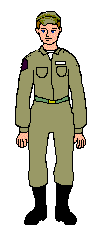Misc
DO YOU WANT TO BE A COMMANDO OFFICER IN INDIAN ARMY?
Para (Special Forces) is a special forces unit of the Indian Army's Parachute Regiment and is tasked with missions such as special operations, direct action, hostage rescue, counter-terrorism, unconventional warfare, special reconnaissance, foreign internal defense, counter-proliferation, counter-insurgency, seek and destroy and personnel recovery. The unit's heritage stems from World War II, with the creation 50th Parachute Brigade in October 1941.
Selection
All Indian paratroopers are volunteers. Some enter the Para regiments fresh from recruitment, while others transfer in from regular army units. They are put through a probationary period / selection process of three months for Paratroopers (Airborne) Battalions (5,6,7) and six months for Para (Special Forces) battalions (1,2,3,4,9,10,11,12,21 PARA), in order to be a Para (Special Forces) all personnel are first required to qualify as Paratroopers; once selected the candidates may choose to advance to the SF selection, which takes place twice a year in the spring and the autumn term. It is one of the longest and toughest phases in world where the applicant is exposed to sleep deprivation, humiliation, exhaustion, mental and physical torture.
Training
The initial training to be a special forces operator is 3.5 years, the longest anywhere but the training is also a continuous process, in the special forces, the members are imparted both basic and advance training. They are taught specialised mode of infiltration and exfiltration, either by air (combat freefall) or sea (combat diving). Some trainees return to PTS to undergo the free-fall course, which requires at least 50 jumps from altitudes up to 33,500 feet to pass. Both HALO (High Altitude Low Opening) and HAHO (High Altitude High Opening) techniques are learned. The ability to use the HAHO method and specially designed maneuverable parachutes called HAPPS (High Altitude Parachute Penetration System)/AMX-310 to conduct stealth insertions over distances up to 50 km is also perfected.
For combat diving training, the commandos are sent to the Naval Diving School, Kochi.Like other special forces, these para commandos are trained for land, air and water.
Daily routine begins with a 20 km morning run. Infiltration, exfiltration, assault, room and building intervention,intelligence gathering, patrolling, ambush tactics, counter-ambush tactis,counter insurgency, counter-terrorism, unconventional warfare, guerilla warfare, asymmetric warfare, raids & sabotage, martial arts training, tactical shooting, stress firing, reflex shooting, buddy system drills, close quarter battle, tactical driving, advance weapon courses & handling, sniping, demolition training, survival skills, linguistic training, logistic training, trade-craft training is imparted by the intelligence agencies. The training drills involve live ammunition at all times which has also become a reason for fatal accidents at times leading to death.
Night and weapons training and field craft involving 20 km treks with 60 kg (132 lb) loads and live ammunition are conducted. Weekly forced marches with 65 kg combat loads with distances over 50 to 80 miles and quarterly night drops with full combat loads are also conducted. In addition to this in-house training, the commandos also attend a number of schools run by the Army that specialize in terrain and environment warfare.
These include the Junior Leaders' Commando Training Camp in Belgaum, Karnataka, the Parvat Ghatak School (for high altitude mountain warfare) in Tawang Arunachal Pradesh, Desert warfare school in Rajasthan, the High Altitude Warfare School (HAWS) in Sonamarg, Kashmir and the Counterinsurgency and Jungle Warfare School (CIJWS) in Vairengte, Mizoram, Indian special forces training school in Nahan, Himachal Pradesh. These schools are among the finest of their kind anywhere and routinely host students from other countries.
Members of USSOCOM (United States Special Operations Command) and UKSF (United Kingdom Special Forces) have conducted joint training exercises with the Indian Paras, and SOF members from the three nations routinely train at each other's facilities to improve military cooperation and tactical skills. This allows the SOF operators from each nation to see tactics and perspectives offered by other top-notch organizations.
U.S. Army Special Forces have also conducted joint HAHO training with the Para (SF) in 1992, underwater training in 1995 and anti-terrorism training in 1997. It is thought that the French Foreign Legion also has approached CIJWS regarding the courses taught by them. Para (SF) can also undergo a complete Combat Divers course, in which they earn a combat diver badge.
They are also experienced in conducting SHBO (special heli-borne operations) and typically employ Cheetahs, MI-8/MI-17 or HAL (Dhruv) helicopters for this purpose.


